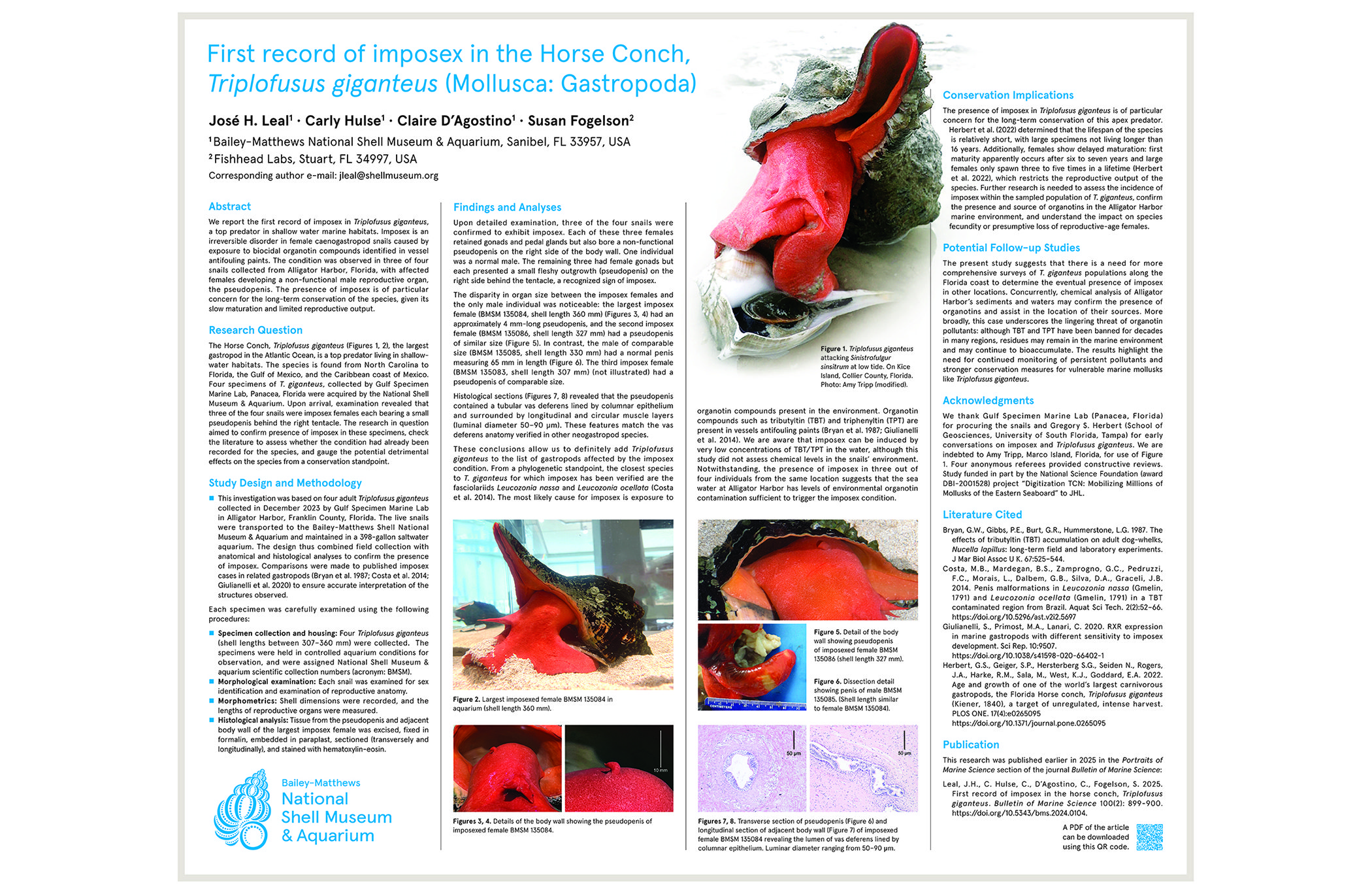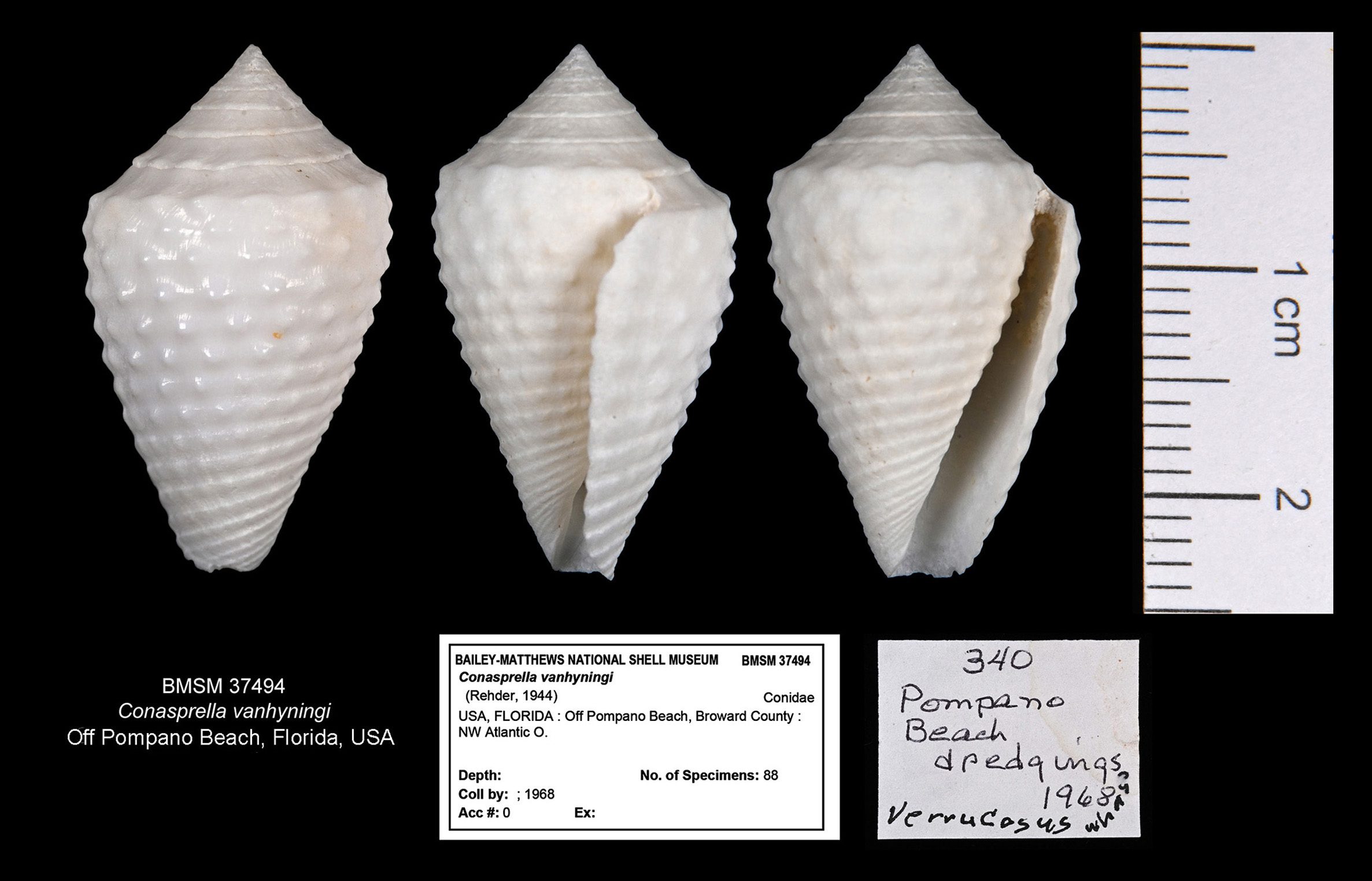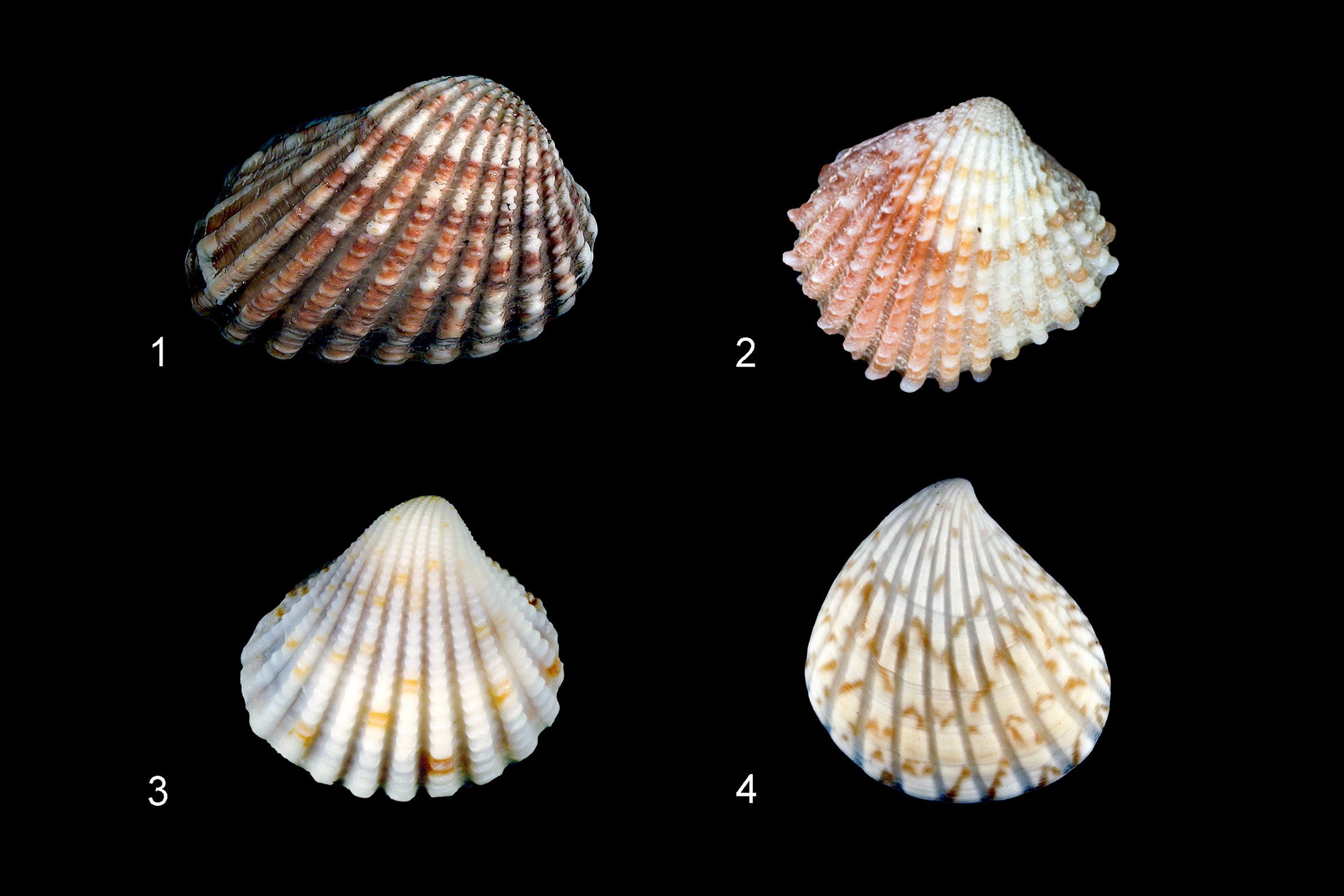Last week, Museum collaborator and Shell Ambassador Amy Tripp (Marco Island, Florida) brought to my attention a slipper snail she photographed at nearby Kice Island. The photo doesn’t show much of the shell, but clearly portrays a mass of egg capsules containing developing embryos. As I peeked at the photo, my first thought was “hmm, this is a female Common Atlantic Slipper, Crepidula fornicata, brooding her eggs.”
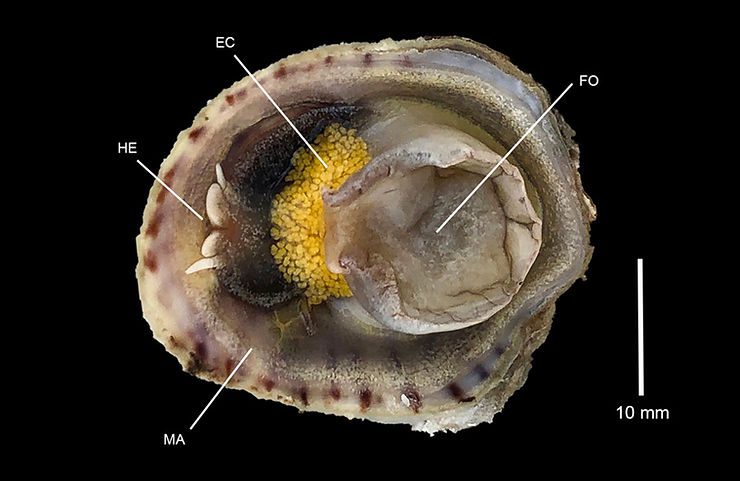 Female Crepidula maculosa. HE = head; EC = mass of egg capsules ; FO = foot; MA = mantle. Photo by Amy Tripp.
Female Crepidula maculosa. HE = head; EC = mass of egg capsules ; FO = foot; MA = mantle. Photo by Amy Tripp.
However, a quick estimate of the number of eggs in each capsule told me I was wrong. Female Common Atlantic Slippers produce between 120–500 embryos per capsule, but the capsules in Amy’s slipper snail contained only about 10–20 embryos each! Upon closer examination, shell features clearly indicate that it is a Spotted Slipper Snail, Crepidula maculosa, a local species that, at a quick glance, may be confused with the (also local) Common Atlantic Slipper Snail, Crepidula fornicata.
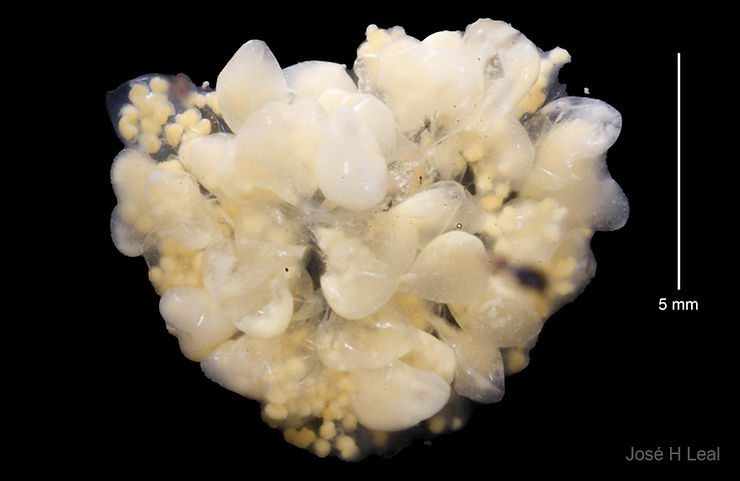 Crepidula maculosa, part of the mass of egg capsules. One mm = 0.04 inch.
Crepidula maculosa, part of the mass of egg capsules. One mm = 0.04 inch.
After a brief period of brooding, the “other species,” the Common Atlantic Slipper, produces a large number of small eggs that develop to become free-swimming larvae that can be carried by sea currents for long distances. The Spotted Slippers, in contrast, brood their large eggs until the juvenile snails hatch looking like small adults, completely skipping over the free-swimming larval stage. (With thanks to Rachel Collin, Smithsonian Tropical Research Institute, for exchanges about slipper snails and confirming the ID of the species.)
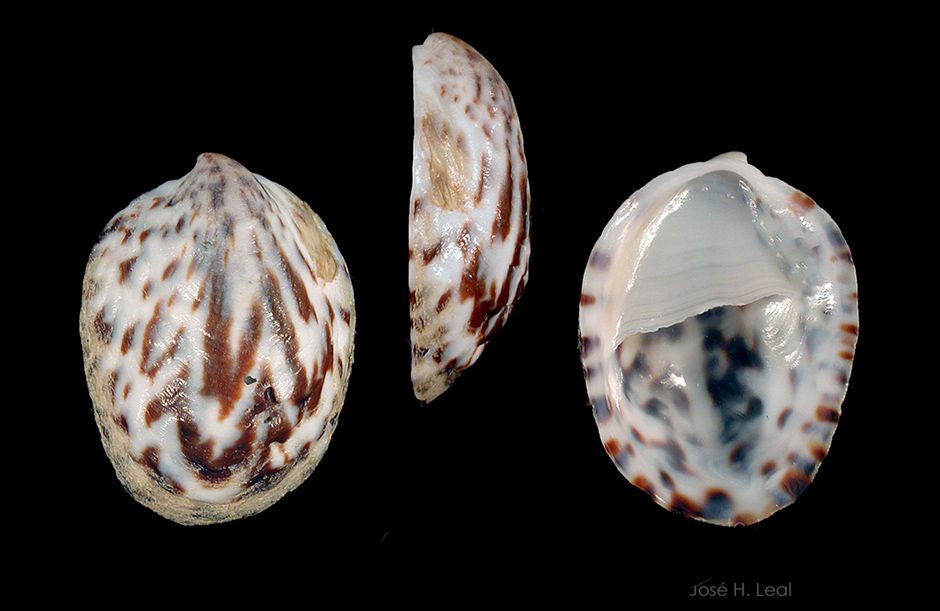 Crepidula maculosa, shell from Museum collection.
Crepidula maculosa, shell from Museum collection.
#crepidulamaculosa #spottedslippersnail #calyptraeidae #crepidulafornicata #commonatlanticslippesnail #eggcapsules #reproduction #development #freeswimminglarva
